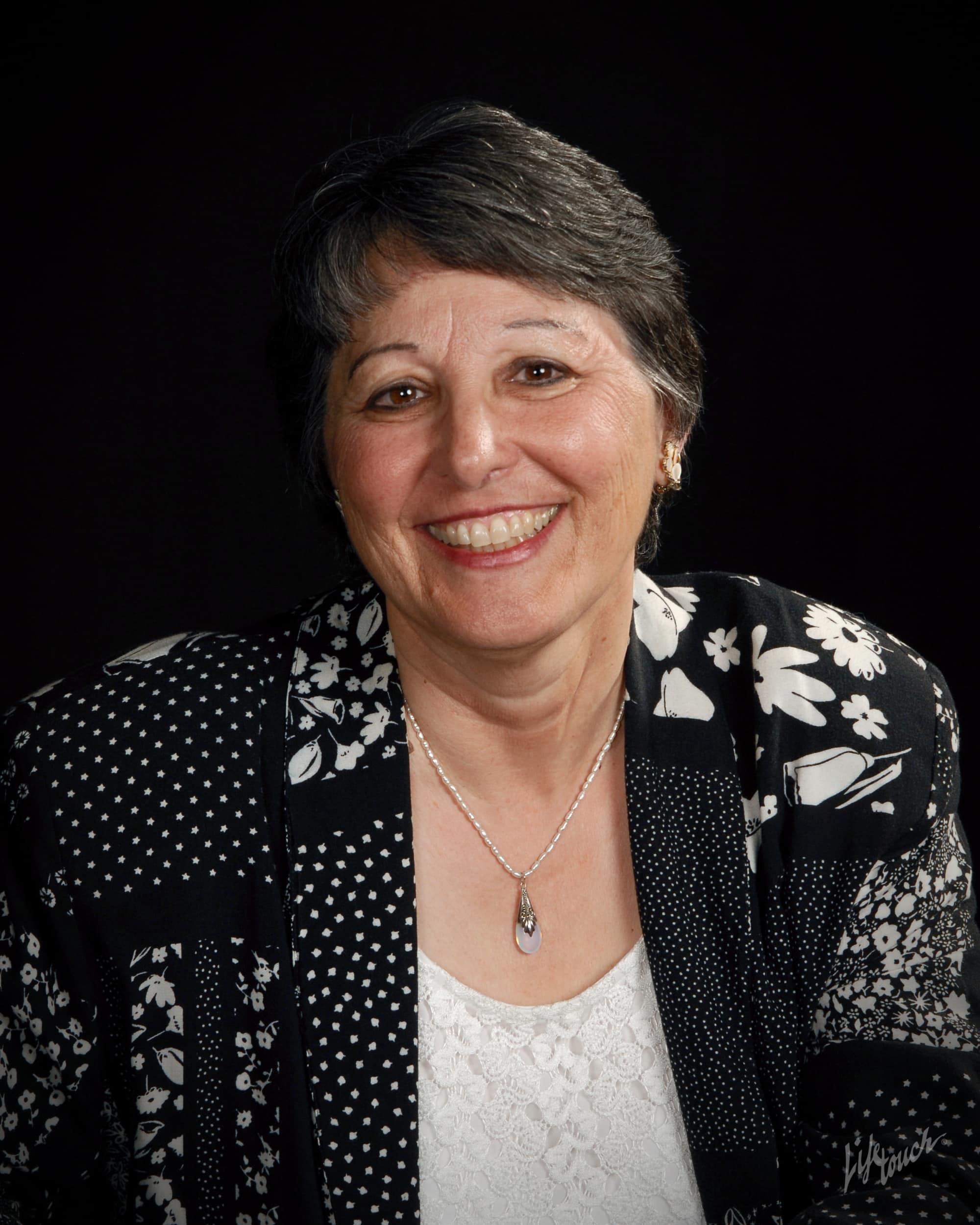By Sue Lick.
Reddish-blond fur swirled in the air as we groomed the shedding dog. In a single stroke, the comb was filled with yellow fluff. I released the fur to the wind, watching it drift across the deck and the lawn.
Fred ran a nubby rubber glove across Sadie’s back, emptied the fur from the glove, and rubbed her again until the dog squirmed away. Tufts of the pale stuff stuck out around her hips and butt as she walked to the edge of the deck, stepped off and continued across the lawn. She raised her right back leg and peed, then trotted to the hole she had dug under the garden shed, pawing her way in until all that showed was her waving tail. Fur lay in soft puffs on the deck and the lawn. Strands clung to our clothes.
“That’s how Mom looked,” Fred said.
Our eyes met. Oh God. Unconsciously, I stroked my own thick dark hair, which I had just paid $25 to have professionally trimmed and thinned.
When I left for California three weeks earlier, curly white hair covered Helen Lick’s head like a cottony crown. While I was gone, she started chemotherapy. After just one treatment, her hair had started falling out in clumps. We had no idea it would happen so soon.
As we brushed the dog fur off our clothes, Fred told me what I had missed.
As Fred went into the kitchen to pour himself a glass of wine, I thought of the American Cancer Society booklets that had been stacked on his mother’s counter for over a month. The authors suggested the patient buy a wig right away, while she still had some natural hair to match it to. It would be a good idea to cut her own hair short. It would look thicker and be less distressing when it fell out. You might even want to shave it off, they said. But don’t try to dye it, perm it or blow-dry it. Because chemotherapy drugs kill healthy cells along with the cancer cells, most patients lose all their hair, not just on their head but everywhere. (Later Helen would confess with a sudden wicked smile that she no longer had to shave her chin hair).
The hair will come back, proclaimed doctors, technicians and former patients, but it might not be the same color, and it might be curly instead of straight. They said it so matter-of-factly, as if it’s no big deal that one’s hair falls out and grows back different. Hair is one aspect of our appearance that we can usually control. We can’t change our faces or our shapes or the color of our skin, but we can make our hair short or long, straight or curly. We can dye it whatever color we want. What we do with our hair is a big part of the image we present to the world. Compared with losing your life, going bald seems like a minor problem, and yet it matters.
The booklets noted that only 41 percent of people with Helen’s type of lung cancer survived more than a year, with or without chemo.
Fred returned, setting his tumbler of Zinfandel on the glass table. “This motel was really a dump,” he said. “We got two rooms, and they weren’t next to each other. They weren’t even on the same floor.” He sipped his wine, remembering.
They visited the wig shop in the afternoon, then spent the night in Corvallis before going for Helen’s chemo appointment in the morning. He had called her at 9 a.m. to make sure she was awake.
“Come help me with my hair,” she said. Earlier, she had asked him to shave her head. Fred had refused. But now he found his 84-year-old mother cutting her own hair down to a crew cut, throwing the white locks into the motel bathroom wastebasket. She had most of it off but couldn’t reach the back. She handed him the orange-handled sewing scissors.
He struggled to get his fat fingers in the holes. “Are these left-handed scissors?” he asked.
“No.”
“Then I can’t–” But he had to. His mother’s hair was short all around except for the leftover strands in the back. Her pink scalp showed through the bald spots. It was too late to turn back. He began to cut.
Outside, doors slammed and cars started, business men and women heading for meetings, families loading ice into the Coleman chest before they headed west for a day at the beach. An old man and woman juggled Styrofoam coffee cups and stale sweet rolls from the continental breakfast in the lobby as they walked across the parking lot, talking about the fun they would have with their grandchildren later that day. A child ran across the pavement, shouting, “Mom, Mom!”
“Hush!” a woman’s voice replied.
Inside Room 108, the bathroom light bounced off the bald spot in the center of Fred’s own head as he leaned over his mother, his lips pressed so tightly together the brown and white hairs of his beard and mustache met. He cut a few strands at a time, placing them carefully inside the plastic bag in the wastebasket.
On the television, Bryant Gumbel interviewed 13-year-old actor Haley Joel Osment about his latest film, “Artificial Intelligence.” Then the sports guy raved about the Blazers’ new coach, Maurice Cheeks, and complained that too many NBA teams were drafting players straight out of high school. Think about basketball, Fred told himself as he cut and tossed his mother’s hair. Think about how great the Lakers were in the playoffs.
That week, cancer killed actor Jack Lemmon and country guitar legend Chet Atkins. The week before, composer John Hartford died of cancer at age 63, the same age as Fred. Our friend Patricia was having chemotherapy in Portland, cousin Irene reported for radiation every day in San Jose, and our pal Nila drove her husband George an hour each way to Corvallis for daily radiation treatments. Suddenly cancer was everywhere, in every family, including ours.
“We’d better leave a tip for the maid,” Fred’s mother said, staring at herself in the mirror, running her hand over the mannish gray-brown stubble left on her head. Her curls were gone, a soft pile of fluff in the wastebasket. Escaped strands hung off her pale green sweatshirt and clung to Fred’s yellow golf shirt. A few had fallen to the floor. More hair stuck to the edges of the sink.
“Well, that was a waste of $50,” Helen said.
“What?” Fred turned reluctantly from the basketball draft picks.
“My perm. Fifty bucks for nothing.”
Helen looked at the wig box, shrugged and put on the black turban. It looked like the kind ladies used to wear in the ‘50s, back when they painted their lips scarlet and wore bras shaped like torpedoes. She straightened the turban over her shorn head and checked her tiny diamond stud earrings. “I’m ready to go.”
At first glance, Fred could almost pretend it was 1946, when he was a tow-headed little boy who was not allowed to play with scissors and who called his mother “Honey” because she was too vain to be called “Mom.”
But this was his mother, not Honey, moving slowly toward the wheelchair that waited by the door.
Fred took another sip of wine. “So we went for her treatment, and then we came home.”
The dog jumped back onto the deck, shoving her head between Fred’s knees to be petted. He rubbed and scratched her head. Satisfied, she stretched out on the deck in the sun, her coat sleek and smooth, and went to sleep as clumps of yellow fur blew away in the wind.
Sue Fagalde Lick, writer/musician/dog mom, spent many years as a journalist in California. Now living on the Oregon coast, she is the author of Shoes Full of Sand, Stories Grandma Never Told, and Childless by Marriage. Her essays and poetry have recently appeared in Dogwood, Apple Valley Review, and Prime Number, as well as the upcoming anthology, My Other Ex: Women’s True Stories of Leaving and Losing Friends.
https://www.suelick.com.





Such a beautifully written piece.
The connection of the pet’s fur being trimmed and the mother’s hair being “lost” is interwoven beautifully. This a touching story told in a creative, unique way.